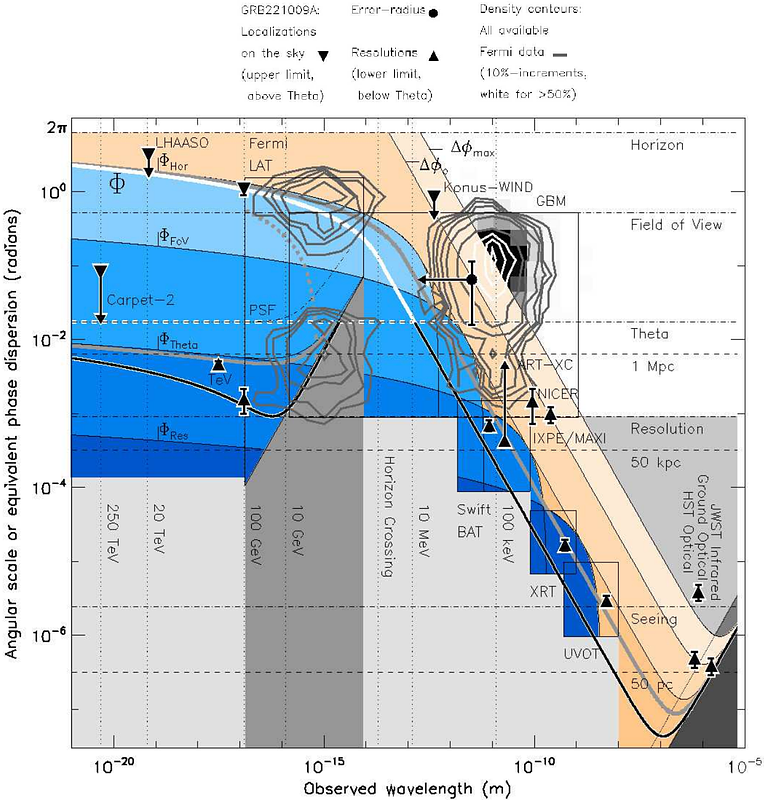Observations of Holographic Quantum-Foam Blurring

Observations of Holographic Quantum-Foam Blurring
Eric Steinbring
AbstractThe "foamy" nature of spacetime at the Planck scale was an idea first introduced by John Wheeler in the 1950s. And for the last twenty years or so it has been debated whether those inherent uncertainties in time and path-length might also accumulate in transiting electromagnetic wavefronts, resulting in measurable blurring for images of distant galaxies and quasars. A confusing aspect is that "pointlike" objects will always be blurred out somewhat by the optics of a telescope, especially in the optical. But it turns out that Gamma-Ray Bursts (GRBs) are more useful to test this, and have been observed by a host of ground-based and space-based telescopes, including by the Fermi observatory for well over a decade. And a recent one was unprecedented: GRB221009A was extremely bright, allowing follow-up from the infrared through the ultraviolet to X-rays and gamma-rays, including a first association with photons at high TeV energies. I will discuss how that observation is in direct tension with the calculus of how spacetime "foaminess" can add up in an image of a pointsource at cosmological distances, which at high-enough energy could spread these out over the whole sky without resulting in photon loss. A simple multiwavelength average of foam-induced blurring consistent with holographic quantum gravity is described, analogous to atmospheric seeing from the ground. This fits with measured instrumental point-spread functions and with the highest-energy localization of GRB221009A, resolving the observational issues and pointing to a key physical implication: spacetime does not look smooth.